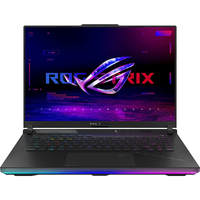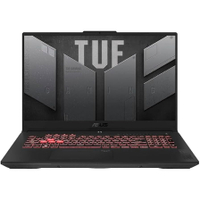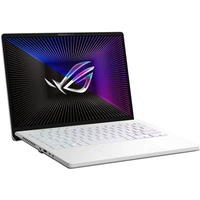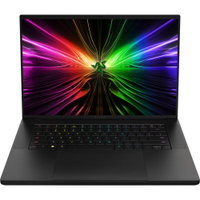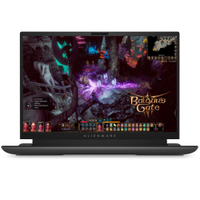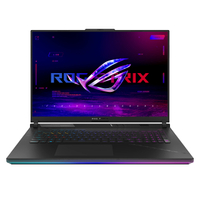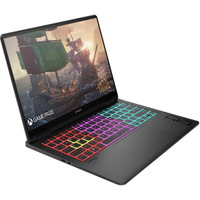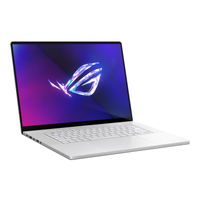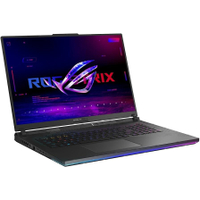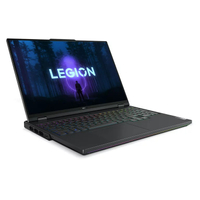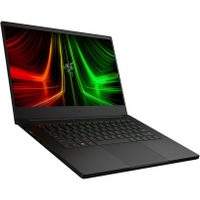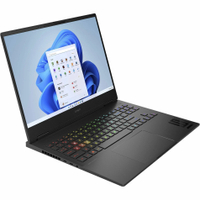The best gaming laptop 2024 - all the latest models compared
We're rounding up all the best gaming laptops to suit any budget
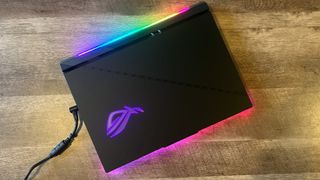
1. The Quick List
2. Best overall
3. Best cheap
4. Best 14-inch
5. Best 16-inch
6. Best 18-inch
7. Most powerful
8. Best slimline
Whether you want to play cozy games on the couch or you're looking for a portable powerhouse, the best gaming laptops come in all shapes and sizes. Between 14-inch backpack buddies and massive 18-inch desk hoggers, there are plenty of makes and models all catering to slightly different playstyles.
2024's cohort doesn't have many new tricks under the hood - you'll still find plenty of last year's machines on this list due to their performance value. However, we do now have super-fast OLED panels, a handful of new AI features, and even more slimline designs on the shelves. That means anyone who prioritizes screen quality or portability is shopping at the right time.
The best gaming laptop we've tested is the Asus ROG Strix Scar 16. It sits in that perfect Goldilocks zone between portability and power, offering incredible framerates, a gorgeous display, and a slick design. There are slimmer machines out there, and there's better performance elsewhere, though. We've loaded our Steam libraries onto more gaming laptops than we can count, all to find the cream of the crop.
You'll find all our favorites below, with each rig having passed a series of in-game and dedicated stress-test benchmark processes. We've also lived, worked, and played with all of these machines for a minimum of two weeks each (and more when we can swing it that way). That means you know each one has been not only play-tested but life-tested along the way. You can check out exactly how we test gaming laptops in our dedicated guide.
With Amazon Prime Day gaming laptop deals on their way we're also looking forward to some particularly interesting offers across both last year and 2024's roster of machines.
The quick list
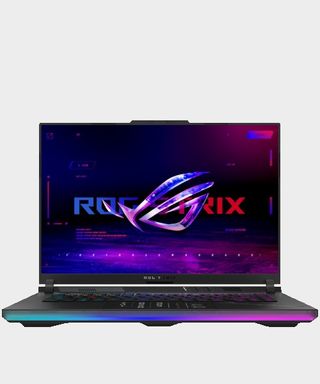
The best gaming laptop overall
The Asus ROG Strix Scar 16 remains our favorite gaming laptop overall. It lives in a perfect middle spot between power and portability.
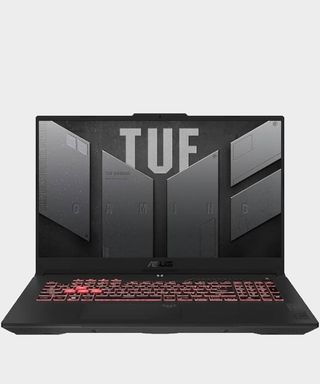
The best cheap gaming laptop
You don't need to spend big on a gaming laptop - especially if you play lighter games. The Asus TUF A15 offers the best price/performance value we've tested.
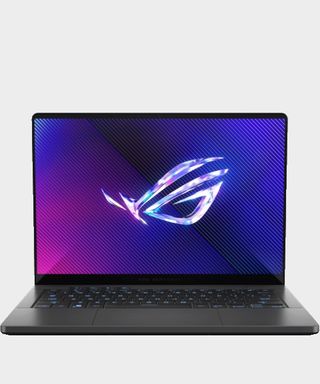
The best 14-inch gaming laptop
The latest Zephyrus G14 feels more like an ultrabook with its slick design and OLED panel. It's still got gaming chops, though - making it our go-to 14-incher.
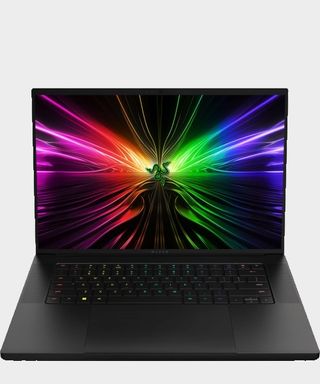
The best 16-inch gaming laptop
Yes, the Blade 16 is going to cost you - but it's the best 16-inch model on the market thanks to its blinding OLED display and fantastic performance.
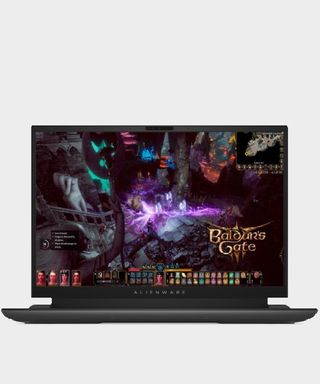
The best 18-inch gaming laptop
The Alienware M18 walks a fine line. It's a beast but that means it can rev its components to their maximum value - for a fair price to boot.
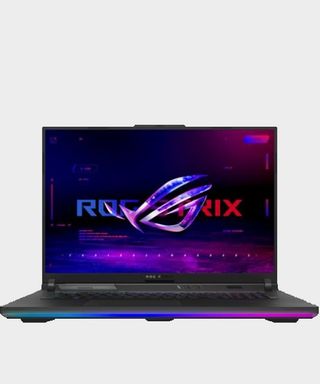
The most powerful we've tested
Interestingly, the 2023 Asus ROG Strix Scar 18 performed better in our testing than its current-gen counterpart. That means it remains the most powerful we've had on the desk.
Show more ↓
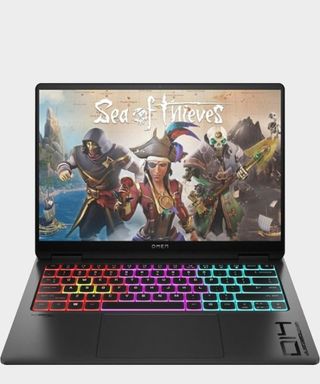
Best slimline
The HP Omen Transcend 14 feels almost like a Chromebook, but that super-skinny plastic chassis and low weight hide some solid performance.
The best gaming laptop overall





Specifications
Reasons to buy
Reasons to avoid
Our favorite configuration:
Asus ROG Strix Scar 16 | RTX 4080 | Intel i9-13980HX at Amazon
This is the CPU / GPU we tested in our Asus ROG Strix Scar 16 review, and even though you're not going for the top top RTX 4090 model it still provides an eye-watering amount of power. 32GB RAM will see you through the games of the future and that Nebula display certainly isn't to be missed either.
The Asus ROG Strix Scar 16 has taken over from the Razer Blade 15 (still featured below) as the best gaming laptop we've had our hands on yet. This thing flies through anything you can throw at it, without reaching the dizzying heights of other premium RTX 40-Series rigs. That's because the Strix Scar puts its power exactly where a PC gaming enthusiast wants it - cooling, CPU efficiency, and GPU power - all while still offering a crisp set of RGB panels and a Mini LED display worthy of its next generation chassis.
✅You prioritize performance over a slick chassis: The Asus ROG Strix Scar 16 is a powerful machine, but it's certainly not the most expensive model on the market - because it doesn't try and squeeze those components into a more portable form factor.
✅You value a high quality display: That Mini LED display does add to the final price, but it's well worth the additional immersion for that crisp QHD+ resolution.
✅You don't mind a more gamer-styled aesthetic: The Strix isn't going to fade into the background - while you can turn those glaring LEDs off, the translucent body and chunky grills scream gaming laptop.
❌You don't want to spend over $3,000: The Strix series is at the top of Asus's range, so we're unlikely to see cheaper configurations surfacing. While it's good value in its price bracket, it's still a premium machine.
❌You prefer a sleek form factor: The extra space required to achieve such performance is a necessary evil here.
❌You don't need the latest top of the range specs: If your Steam library simply won't make the most of those top shelf graphics cards and processors, the Strix isn't going to be worth it.
Design: This isn't a machine for the more subtle amongst us, though. While the RGB panel running across the lower lip can be switched off, this is still very much a gaming laptop. The translucent design across the main deck wasn't quite our favorite touch and does add to this gamer aesthetic while slightly cheapening the experience, but this is down to personal preference.
The lid sports a large ROG logo and a series of etched diagonal lines along the chunky grill towards the back, further removing this rig from your everyday office laptop. However, it's not such an in your face design, and putting those LEDs to sleep certainly keeps the vibe slick.
Features: We've also got one of the best screens we've had the pleasure of using on a gaming laptop. Asus has branded its Mini LED screens 'Nebula HDR', and they sing. Between 1,024 dimming zones and 1,100+ nits of peak brightness, colors pop with an excellent vividity and balance well with a deep, rich contrast. Throw in Dolby Atmos and a solid virtual surround system and you've got a seriously immersive experience.
That's, of course, backed up with a high-end set of configuration options. The ROG Strix Scar 16 can move up to an i9-13980HX CPU with an RTX 4090 card - those are specs that are sure to satisfy anyone looking for a top shelf rig.
Performance: We tested an RTX 4080 rig with the Intel i9-13980HX processor that comes with both this and the 4090 configuration, drawing a 17,611 Time Spy score and 32,876 Fire Strike score to beat out the Asus ROG Zephyrus M16 by some margin. The Scar 16 even beat the larger (and far more expensive RTX 4090-toting) Razer Blade 18 in these benchmark tests as well. Those are numbers that will comfortably see you through the next five years of gaming, and potentially much more if we don't see any particularly demanding graphical breakthroughs.
No, framerates weren't as impressive as the ROG Zephyrus Duo 16 listed below - but equally you're not spending an extra $1,000 on a fancy second screen (and the power to run it) you might not use. Plus, at three-figure framerates in Ultra settings across demanding titles, there's no arguing the raw horsepower baked into this machine.
With HDR content represented in gorgeous detail and colors popping from the screen with excellent vibrancy, this is a real feast for the eyes.
Asus ROG Strix Scar 16 review
Verdict: We're getting our hands on more RTX 40-Series gaming laptops all the time, but for now the Asus ROG Strix Scar 16 is the best model to pass our desks. It's well worth the investment for anyone on the hunt for a high-end machine with bags of power to spare for future releases.
Read more: Asus ROG Strix Scar 16 (2023) review
| Benchmark Test | 1080p | QHD+ |
|---|---|---|
| Shadow of the Tomb Raider | High: 201fps / Highest: 191fps | High: 179fps / Highest: 173fps |
| Total War: Three Kingdoms | High: 193fps / Ultra: 148fps | High: 121fps / Ultra: 87fps |
| Red Dead Redemption 2 | Balanced: 118fps / Highest: 107fps | Balanced: 95fps / Highest: 94fps |
| Metro Exodus | High: 134fps / Ultra: 115fps | High: 101fps / Ultra: 93fps |
| The Division 2 | High: 167fps / Ultra: 138fps | High: 140fps / Ultra: 108fps |
The best cheap gaming laptop




Specifications
Reasons to buy
Reasons to avoid
Our favorite configuration:
Asus TUF A15 | RTX 4050 | AMD Ryzen 7 7735HS at Asus
If you're spending as little as possible, this RTX 4050 configuration will see you through. You'll still be able to post some more than playable framerates with this model, while benefitting from a 144Hz display and Ryzen 7 processor.
The Asus TUF A15 has long been held as a staple among budget gaming laptops, but the latest 2023 model has cemented its position as one of the greats. This is a cheaper rig, so you're making some sacrifices to get those latest components in the price tag. However, the performance on offer is fantastic value for money as a result.
✅ You prioritize speed over finesse: The 1080p display in here is built to handle speed over the extra details you might find in a 1440p or 1600p screen.
✅ You're happy to crank up the fans: We got our best results from the Turbo Mode power preset which can kick those fans up to give you a tangible boost in performance.
✅ You don't want it to look cheap: The metal lid and simple color scheme makes the A15 look far more premium than its price tag suggests. If you're looking to spend less without that typical budget aesthetic, this is your best bet.
❌ You need a machine for daily work: If you're after a portable machine for daily work out and about, this isn't it. Not only is it chunkier than other ultrabooks at similar prices, but the keyboard and trackpad aren't up to a full day's clacking.
❌ You want to push demanding games to their limits: There's only so much an RTX 4060 or RTX 4070 can do - if you're looking to play next year's biggest Triple-As on max settings we'd recommend something with a little more power.
Design: From the cool gray tones to the metal lid, the Asus TUF A15 looks and feels more premium than it actually is. Yes, the majority of this chassis is plastic, and there are some questionably cringey text stamps on the main body, but it's a slick form factor overall and one that neatly sidesteps the common angular pitfalls of cheaper rigs.
The build quality is secure, with a nicely tightened hinge to the main display and only the expected amount of flex in the keyboard area for a gaming laptop of this price. No, it's not quite as slim as the previous Asus TUF Dash F15 before it, but it's still a comfortable size - easily backpackable and well below the heavyweights on this list.
Features: Like all good budget gaming laptops, the A15 has everything you need, but doesn't pump too much of your cash into any of its main feature areas. Instead, it saves its value for performance. That means you're getting a pretty standard 1080p 144Hz IPS display (in an older 16:9 form factor that did feel a little restrictive in our testing).
This screen could have benefitted from a few more nits of brightness, but displays is colors with enough contrast and vividity to get by in a more casual context. There's also a full-sized keyboard in here - a rarity even in 16-inchers these days - and while it's a little softer than we'd like it still gets the job done. That trackpad isn't going to see you through a work day on the go, though. It's a clunky implementation with unreliable zoning for each click side and a heavy middle section.
Performance: We were impressed with the numbers filing out of the A15's benchmarks. It actually scored higher in Time Spy and Fire Strike than a similarly specced HP Omen Transcend 16 (worth about $600 more) and managed to carry us through demanding titles like Returnal and Hitman 3 without once dropping even close to 60fps. Considering you're spending far less than usual and still scoring three-figure framerates in Shadow of the Tomb Raider this is an absolute win.
Verdict: If you're going all in on performance and your budget doesn't stretch to the big dogs in this race, the Asus TUF A15 is a must-see. It's one of the cheapest machines we've tested so far and we've come away surprised by the performance on offer as well as the form factor and design. You are making some sacrifices to get there, but at this price point they're all worthwhile.
Read more: Asus TUF A15 review
| Benchmark | High | Highest |
|---|---|---|
| Shadow of the Tomb Raider | 137fps | 136fps |
| Total War: Three Kingdoms | 120fps | 85fps |
| Returnal | 105fps | 96fps |
| Hitman 3 | 96fps | 95fps |
The best 14-inch gaming laptop





Specifications
Reasons to buy
Reasons to avoid
Our favorite configuration:
Asus ROG Zephyrus G14 | RTX 4070 | AMD Ryzen 9 8945HS at Asus
You don't get a choice in your CPU here, but we'd go to the top of the pile for that RTX 4070 GPU. Considering the slimline form factor you'll need this graphical grunt to get the most out of your games now and in the future.
The 2024 Asus ROG Zephyrus G14 changed the game again, adding a glorious OLED display and cutting its top end components from the lineup to achieve a more ultrabook-oriented slimline design. This is a masterpiece for those after the best possible experience at the intersection between power and portability.
✅You travel regularly with your laptop: Its 14-inch form factor is the giveaway here, but the G14 is particularly easy to transport thanks to its light weight and sturdy design.
✅Screen quality is a priority: That OLED panel is unmatched at the moment, offering an incredible viewing experience across both games and movies.
✅ You want a subtle aesthetic: The more refined aesthetic means you've got a gaming laptop that won't stand out from high-end ultrabook options. Think MacBook but with an RTX 4070.
❌ You're chasing framerates: The lack of RTX 4080 and RTX 4090 configuration options means you're not going to beat more high-end specs in the framerate department.
❌ You want a desktop replacement: The G14 is designed to go out and about with you - if you don't mind a larger machine you can spend less and keep it docked at home.
Design: Asus has done away with its iconic LED matrix lid, and instead opted for a much cleaner (and personally preferable for this reviewer) single diagonal stripe. Alongside a new unibody CNC milled aluminum chassis, MacBook Pro-esque light gray, and slimline base, this is a gaming laptop designed to fit in with high end ultrabooks. Dropping bigger components like the RTX 4080 and RTX 4090 from its lineup means the G14 is now one of the lightest rigs on the market at just 1.5kg, all while still retaining a particularly durable form factor.
Features: We'll have to kick off with that display. Asus partnered with Samsung for this OLED panel and the results are incredible. Everything leaps off the screen, from simple developer logos on game boot to the frenzied colors of Cyberpunk 2077. It's a little slower in the refresh rate department, but in everyday play the incredible color contrast and super vivid effect overall made for an excellent experience.
Those specs have taken a slight hit this year. The 8000 Series Ryzen 9 processor is a marginal upgrade from 2023's model, and GPUs now start at RTX 4050s and cap out at an RTX 4070. That means the overall output is going to be lower, traded out for a more slimline build.
Performance: No, the 2024 Asus ROG Zephyrus G14 isn't going to perform as well as an RTX 4090 model from the previous generation. But with that excellent screen and super slick form factor it doesn't necessarily need to. The RTX 4070 in our testing device was more than capable of staying at over 100fps at 1080p in most games, and often held that position in QHD+ as well. Performance here is on par with a similarly specced Razer Blade 14, though for a lower price, with a notable improvement further up the resolution scale.
Asus is taking the Zephyrus G14 beyond its gaming roots
Asus ROG Zephyrus G14 review
Verdict: The Zephyrus G14 is the best 14-inch gaming laptop we've had our hands on so far, and 2024's iteration continues this tradition of pairing performance with outstanding portability. It's not going to reach the framerate highs of a higher powered device but with a gorgeous OLED panel and a fantastic form factor it's going to see much more use in everyday life.
Read more: 2024 Asus ROG Zephyrus G14 review
| Benchmark | 1080p | 1600p |
|---|---|---|
| Shadow of the Tomb Raider | High: 152 | Highest:147 | High: 127 | Highest: 119 |
| Total War: Three Kingdoms | High: 124 | Ultra: 93 | High: 73 | Ultra: 53 |
| Returnal | High: 87 | Epic: 83 | High: 71 | Epic: 62 |
| Rainbow Six Extraction | High: 180 | Ultra: 154 | High: 135 | Ultra: 121 |
| Hitman 3 | High: 114 | Ultra: 111 | High: 105 | Ultra: 101 |
The best 16-inch gaming laptop





Specifications
Reasons to buy
Reasons to avoid
Our favorite configuration:
Razer Blade 16 | Intel i9-14900HX | RTX 4070 at Razer
The Razer Blade 16 isn't a cheap machine, but dropping things down to an RTX 4070 isn't going to hurt your performance too much and you save some considerable cash. We've opted for 16GB RAM in this configuration to keep that initial investment as low as possible (it's fully upgradeable further down the line), and stuck to that high-end OLED display.
The 2024 Razer Blade 16 is expensive - probably a little too expensive considering its competition. But it is the best 16-inch gaming laptop we've tested so far, and it packs a serious punch in its extra features as well.
✅ You prioritize style: Razer has bags of style about it, from that slick aesthetic to the slimline form factor. If you're looking for a high-end gaming laptop that really looks the part, you've found it here.
✅ You don't want to compromise on your display: That 240Hz OLED panel running at a full 1600p is something to behold. There's no sacrifices in this screen - it's got it all.
✅ This is a long-term investment: The Blade 16 is a lot up front, but these rigs can see you through years of the most demanding games.
❌ You only play lighter titles: If you don't play every day, or you only play low-demand games then the high cost of the Razer Blade 16 just doesn't make sense.
❌ Portability is your number one priority: Yes, the Blade 16 is slimline, but it's not as easy to transport as something smaller like the Asus ROG Zephyrus G14 or G16. This is still a heavy piece of kit considering its stature.
Design: You don't need us to tell you what a Razer Blade gaming laptop looks like. These machines have all held the same black CNC milled unibody design for years now, and the 2024 Blade 16 doesn't deviate from the plan. This is still a fantastic build, though, with the rock solid form factor and slick, subtle aesthetic that has been celebrated in Razer's history. The 16-inch form factor feels good as well, that 16:10 aspect ratio gives you plenty more real estate compared to the Razer Blade 15, but doesn't overload a backpack in the same way as the Razer Blade 18.
Yes, this is still a skinny machine - especially compared to chunkier Scar models from Asus. But it's not quite as thin or light as the Asus ROG Zephyrus G16, so if you're putting portability at the forefront of your purchase you might want to consider another build. That extra size does work in the Blade 16's favor overall, though. You've got plenty more space to draw just that little extra power out of your components - which can make all the difference when balancing performance.
Features: The star of the show is that 240Hz OLED panel. Developed by Samsung, this is the first high-speed OLED we've tested and it absolutely sings, offering up a super sharp picture in 1600p and balancing incredible contrasts at the same time. This is the best display we've seen on a gaming laptop, and it's well worth checking out in person.
That screen upgrade is Razer's answer to a slow year for components. Yes, we've got Intel's new 14th generation i9 chip in all configurations (and RTX 4070 - RTX 4090 GPUs), but improvements under the hood are minimal. Similarly, the keyboard and trackpad feel pretty much the same as they always have done - though the sheer size of the latter does get in the way often. THX speakers, a FHD webcam, user-upgradeable RAM and storage (up to a massive 96GB / 8TB), and a surprisingly efficient battery all make this a well-rounded piece of kit for work and play.
Performance: The slimmer form factor means that, despite its extra cost, the Razer Blade 16 actually performs pretty much on par with other high-end 16-inch laptops. It does, however, edge away from similarly skinny models in both in-game framerates and industry benchmark tests. The RTX 4090 configuration we tested posted better numbers than the similarly specced Asus ROG Zephyrus G16, and even beat the chunkier Lenovo Legion Pro 7i by some margin as well.
It’s insanely powerful, packs a seriously smart aesthetic, and its screen can trade blows with high-end gaming monitors.
Razer Blade 16 review
Verdict: The Razer Blade 16 won't be for everyone - and there are plenty of similarly specced 16-inch gaming laptops available for less. However, if you're going for the best in the business, this is the first machine we'd point to. Its display, performance, form factor, and aesthetic all tip the scales in Razer's favor and the result is a truly fantastic luxury machine.
Read more: Razer Blade 16 review
| Benchmark | 1080p | 1600p |
|---|---|---|
| Shadow of the Tomb Raider | High: 193fps | Highest: 192fps | High: 183fps | Highest: 180fps |
| Total War: Three Kingdoms | High: 213fps | Ultra: 166fps | High: 144fps | Ultra: 105fps |
| Returnal | High: 146fps | Epic: 131fps | High: 124fps | Epic: 106fps |
| The Talos Principle 2 (Anthropic Hills) | High: 143fps | Ultra: 110fps | High: 135fps | Ultra: 77fps |
The best 18-inch gaming laptop




Specifications
Reasons to buy
Reasons to avoid
Our favorite configuration:
Alienware M18 | Intel i9-13900HX | RTX 4080 at Dell
We tested an RTX 4090 graphics card with this i9-13900HX processor, but considering you can get away with a sub-$3,000 price tag on an RTX 4080 configuration we're pitching slightly downwards for our favorite configuration. That keeps things incredibly competitive with the Asus below, which is for those who really want to push past that $3K barrier.
The Alienware M18 goes toe to toe with the Asus ROG Strix Scar 18 below in terms of sheer performance, but falls slightly behind the 'most powerful' title. However, with a range of configuration options, a slick design, and features more geared towards desktop usage, it's the best 18-inch gaming laptop overall in our books.
✅ You want big-screen gaming without too high a cost: The Alienware M18 can be configured as low as $1,699.99. While that's still expensive, it's nowhere near the lofty price tags other machines of this scale regularly reach.
✅ You're keeping your laptop on your desk: With a 4.23kg weight, this thing isn't travelling too far. This is a supremely heavy laptop, with a larger footprint than most to boot. That means the Alienware M18 is perfect for those planning to keep their laptop firmly in place.
✅ You don't want messy cables: The majority of the M18's ports are located to the rear of the machine which means you can connect your desk setup without having cables spreading out from the sides. There are still a few handy USB-A and USB-C options on the sides for easy access as well.
❌ You're a competitive player but still want QHD+: The 165Hz rate on the QHD+ screen option is going to hold competitive players back. The FHD+ option is geared towards those more speed-inclined, though, with a whopping 480Hz refresh rate.
❌ You want the best screen quality possible: We noticed that the matte cover makes the screen considerably duller than its competitors, which also has an effect on color contrast.
❌ You want more of an option to travel: All 18-inch laptops are difficult to transport, but this particularly so. There are slimmer, lighter machines out there for those who would still like the option to take their show on the road.
Design: The Alienware M18 had a surprise for us when we first opened the box. Gently sloping the front lip to a thin taper means that the whole design feels more manageable than the more boxy Strix Scar 18 below. No, this isn't a portable laptop by any means, you're still picking up a massive 410 x 319 x 25 mm footprint and a considerable 4.23kg weight, but that slicker design makes it look a little less chunky on a desk top. Elsewhere, you've got all the design staples of an Alienware rig. A cool aluminium lid sports an embossed 18 along the top, with the plastic main body holding onto the same gray aesthetic throughout. Of course, there's still a nice RGB light show to take in, with a more subtle approach than Asus'.
Features: Of course, the big player here is that 18-inch screen. Dell has made some interesting decisions with the specs it offers here, there are only two options; QHD+ 165Hz or FHD+ 480Hz. It would have been nice to have a middle option - both the Razer Blade 18 and Asus ROG Strix Scar 18 have found happy homes in the QHD+ 240Hz region. While motion is still slick, higher framerate games could stand to benefit a little more from improved handling overall. We also noticed that this display runs less bright than both Razer and Asus's options, and doesn't offer any additional HDR capabilities.
However, with an excellent port selection, 1080p webcam built in, and a full sized keyboard (with full sized number pad) this feels like a real desktop PC alternative. Working particularly hard in the M18's favor though, is the component options. With RTX 4060 configurations on the table at sub-$2,000 prices, the Alienware M18 is winning in the choice category. That's perfect if you're after big-screen entertainment but don't want to splash thousands on graphics cards you won't make the most of.
Performance: The Alienware M18 almost bested the Strix Scar 18 in our testing, even beating it in a handful of benchmarking scenarios. While the Asus rig remains top dog, though, there's still some incredible performance under the hood here. In fact, the M18 performed better in more demanding titles like Returnal and Total War: Three Kingdoms, and always packed three figure framerates well into the highest graphics settings in native resolution.
Yes, Alienware has made some sacrifices along the way - in screen, speakers, and portability - but if you're after a desktop replacement that really can take over your setup, you're in the right place.
Alienware M18 review
Verdict: The Alienware M18 does make a few sacrifices, but in doing so it manages to position itself as an incredibly versatile gaming laptop. You can configure it up to the high heavens if you have the budget, or keep things more grounded for big-screen gaming under $2,000. That's not something many 18-inchers can claim - and especially not machines that manage to squeeze this amount of power out of their components.
Read more: Alienware M18 review
| Game | 1080p | 1600p |
|---|---|---|
| Shadow of the Tomb Raider | High: 210fps | Highest: 196fps | High: 184fps | Highest: 173fps |
| Total War: Three Kingdoms | High: 222fps | Ultra: 171fps | High: 144fps | Ultra: 105fps |
| Rainbow Six Extraction | High: 212fps | Ultra: 174fps | High: 168fps | Ultra: 148fps |
| Returnal | High: 183fps | Epic: 142fps | High: 152fps | Epic: 138fps |
| Hitman 3 | High: 168fps | Ultra: 153fps | High: 139fps | Epic: 121fps |
The most powerful gaming laptop we've tested





Specifications
Reasons to buy
Reasons to avoid
Our favorite configuration:
Asus ROG Strix Scar 18 | Intel i9-13980HX | RTX 4090 at Best Buy
This is the top spec of the Asus ROG Strix Scar 18 and the one we tested for three weeks. With that much power behind the Intel i9 processor it's begging to be paired with an RTX 4090 to truly run wild and the 32GB RAM certainly doesn't hurt.
Editor's Note: There is a new 2024 Asus ROG Strix Scar 18 on the shelves now, but improvements under the hood are marginal, resulting in performance largely on par with - and sometimes below - the 2023 option. You are upgrading to a ROG Nebula Mini LED display with the new model, but considering we benchmarked higher numbers on last year's rig we're keeping 2023's iteration in its place here.
18-inch gaming laptops are here, and while the majority struggle to define themselves against cheaper desktop PCs and infinitely more portable 16-inch laptops, the Asus ROG Strix Scar 18 just about wiggles its way into the top spot. After all with benchmark numbers putting it right at the top of our scoring table (and just toppling over the Asus ROG Zephyrus Duo 16), it's the most powerful rig we've tested to date. And that can't be ignored.
✅ Performance is your top priority: There's no hiding it, the Scar 18 can work. If you're going all out on chasing the highest possible framerates (and making sure they're reliable), this is the best option we've found yet.
✅ You have a larger desk setup: That larger footprint commands quite the desk space. While this has been designed to stick close to your permanent setup, it's worth noting you'll need plenty of room to house it.
✅ You're an RGB fan: From the rear grill to the front lip, the Scar 18 shines bright with RGB LEDs. If you've got a setup built to take advantage of a more colorful design you're going to enjoy this one.
❌ You need to travel with your laptop: The Strix Scar 18 is by no means svelt enough to travel with on a daily basis, or even just regularly. If you need a companion for frequent trips, consider something smaller and lighter.
❌ You want to keep cables tidy: Each port is placed on the side, which is frustrating for a desk-bound giant. If stray cables are going to disturb your setup it's worth finding a model that keeps its IO on the back.
❌ You prefer a more subtle aesthetic: All those RGB lights certainly aren't subtle, but they can be switched off. The translucent plastic housing and bold angular lines on the lid can't though.
Design: Looks are subjective but the translucent plastic and RGB lights aren't the most subtle of aesthetics and won't be for everyone. That plastic chassis is a little disappointing in this price range... at first glance. Taking one look at the nearly $5,000 price tag on the all-aluminium Razer Blade 18 has us running back to this cheaper build, though. The plastic may feel a little less luxurious but it's solid, dense and feels durable under hand.
Instead, it's the ports that are going to get in the way of things. You're getting a solid selection, but placing each connection on the left or right flank of a gaming laptop designed to sit (and remain - this thing is 80% heavier than the Zephyrus G14) on a desk is an oversight. Those cables are going to get messy fast.
Features: Asus has steered clear of adding an expensive Mini LED display to its Scar 18, focusing the cost on its components instead, but we were still impressed by the clarity and contrast of this speedy 240Hz panel. Plus, this way we can enjoy the top of the range Intel i9-13980HX processor - and that's not something many gaming laptops can boast.
With a full sized (yes, including a number pad) keyboard, four excellent speakers, a MUX switch, and some strong cooling, there's still plenty going on here. That's a better feature set than the Razer Blade 18 (which neglects the number pad) in a chassis that stays lighter than the Alienware M18.
Performance: This is where we get to the good part. Before testing the Scar 18, the dual-screened Zephyrus Duo 16 was the best performing gaming laptop we'd had our hands on. Yes, the Duo 16 was pitching slightly lower numbers while running that second display - but on paper, the 18-incher has left it in the dust. With Fire Strike coming in at 34,507 and Time Spy pitching in with a 20,132 score, things were already off to a good start. It beat the RTX 4090 Razer Blade 18's 26,844 / 16,367 respective scores by a mile and levelled out with the 4090 Zephyrus's 36,768 / 15,713 numbers.
Between extremely high framerates, rock-solid reliability, and even the option to output to 4K (with ray tracing no less), this is the best performance we've seen from a gaming laptop yet.
Asus ROG Strix Scar 18 review
Throw in consistent 100+ framerates across top graphics settings in Returnal, Total War: Three Kingdoms, and Hitman 3 and it's obvious this is a powerful machine. The consistency of those scores makes this the most powerful gaming laptop we've tested yet.
Verdict: The Asus ROG Strix Scar 18 isn't going to be for everyone. In fact, it's for very few players at all. However, if you're after a desk top machine that also offers the option of portability every now and then it's the most powerful option we've tested so far.
Read more: Asus ROG Strix Scar 18 review
| Benchmark Test | 1080p | 1600p |
|---|---|---|
| Shadow of the Tomb Raider | High: 219fps | Highest: 199fps | High: 191fps | Highest: 187fps |
| Total War: Three Kingdoms | High: 220fps | Ultra: 170fps | High: 140fps | Ultra: 100fps |
| Returnal | High: 161fps | Ultra: 142fps | (1440p) High: 129fps | Ultra: 108fps |
| Rainbow Six Extraction | High: 270fps | Ultra: 253fps | High: 216fps | Ultra: 177fps |
| Hitman 3 | High: 198fps | Ultra: 173fps | High: 172fps | Ultra: 143fps |
The best slimline gaming laptop




Specifications
Reasons to buy
Reasons to avoid
Our favorite configuration:
HP Omen Transcend 14 | RTX 4060 | Intel Core Ultra 7 155H at HP
It's configurable up to an RTX 4070 with an Ultra 9 processor at the helm, but that's a considerable price jump on a smaller 14-inch machine, especially considering that 120Hz display isn't going to go much further than this RTX 4060. This is the sweet spot for the HP Omen Transcend.
The HP Omen Transcend 14 has taken over from its 16-inch sibling this year. The super thin device packs a low weight profile perfect for on the go work and play, but you'll need to keep a USB-C charger handy.
✅ You travel regularly with your laptop: If you need to get out and about this is one of the lightest ways to do so right now.
✅ You prioritize screen quality: Some of your cash is going towards your screen, so if you want to spend a little more than you would on a budget device you're being handsomely rewarded with a fantastic OLED panel here.
✅ You're happy to keep a cable spare: Despite being a work / play hybrid, the HP Omen Transcend 14 still doesn't pack the biggest battery life. USB-C charging makes that easier, but you'll be keeping a spare wire handy.
❌ You prioritize performance over form: If you're chasing framerates, a slimline gaming laptop isn't going to be the right choice for you. There's just not enough space here to run the more powerful components needed.
❌ You only use your laptop in daylight: That screen glare might become a bit much if you're only using your laptop in high lighting situations.
❌ You need all day battery: If you rarely get a chance to plug in while you're on the go you might need to look for an alternative. The battery on this device isn't as strong as it should be for a hybrid system.
Design: The HP Omen Transcend 14 is certainly small. The 14-inch form factor helps out here, but a floating chassis design also keeps things feeling particularly thin in the hand and a low weight makes it backpack friendly as well. Build quality does take a slight hit to keep those numbers low - we found some noticeable flex in the lid and main deck area, despite its aluminum construction.
Like many gaming laptops in 2024, the Transcend is rejecting the old gamer aesthetic of yore. Instead you've got a crisp, clean body with minimal branding and no external lighting to speak of. A simple 'Omen' is stamped in the middle of a soft-touch matte lid, with some text in the lower corner of the hanging edge as well.
Features: Like the HP Omen Transcend 16 before it, the 14-inch model keeps its specs conservative. You've got the three lower tier graphics cards to choose from, with the RTX 4070 option bumping the processor from an Intel Core Ultra 7 to an Ultra 9 model for a hefty price jump.
Above ground, though, you've also got one of the best screens we've used on a gaming laptop. Similar to the OLED panel across the 2024 Asus ROG Zephyrus G14, this screen offers fantastic crisp visuals with incredibly vibrant and detailed color handling to boot. It's limited to 120Hz, but that's par for the course at this level. You're still getting a clean 1800p resolution as well.
Performance: This little 14-inch gaming laptop surprised us in testing. You'll need to tinker with fan settings before reaching the machine's highest possible framerates, but once you do these are some pretty impressive numbers.
Yes, the CPU under the hood is largely an iterative upgrade over last year's roster and the GPU remains the same - but this is a machine with plenty of tricks to boost performance away from core component potential. While the RTX 4060 in our test unit was running at a lower 65W power rate, we still managed to post more than workable framerates and stress test benchmarks at 1080p and in High settings on 1600p.
This is a machine for those looking to take their rig pretty much anywhere, and sometimes for less cash than similarly specced options from Asus and Razer.
HP Omen Transcend 14 review
Verdict: A higher price on the RTX 4060 model means we'd still recommend the slightly cheaper (at MSRP) Asus ROG Zephyrus G14 for anyone after the best 14-inch gaming laptop. However, if you're going for slimline style in a subtle form factor, and still want to keep the OLED display of Asus's juggernaut then the HP Omen is your best bet.
Read more: HP Omen Transcend 14 review
| Benchmark Test | 1080p | 1600p |
|---|---|---|
| Shadow of the Tomb Raider | High: 126fps | Highest: 122fps | High: 105fps | Highest: 98fps |
| Total War: Three Kingdoms | High: 103fps | Ultra: 71fps | High: 57fps | Ultra: 40fps |
| Returnal | High: 81fps | Epic: 70fps | High: 61fps | Epic: 50fps |
| Hitman 3 | High: 97fps | Ultra: 95fps | High: 80fps | Ultra: 76fps |
How we test gaming laptops
Why you can trust GamesRadar+
Every gaming laptop that we review is stress-tested against a series of benchmarking processes and everyday use. We run a standardised series of performance tests on each rig, benchmarking on both High and Ultra / Highest across:
- Shadow of the Tomb Raider
- Total War: Three Kingdoms (Battle)
- Metro Exodus
- The Division 2
- Red Dead Redemption 2
We carry out these benchmarks at both 1080p and other native resolutions offered by each individual system.
We then test the GPUs inside these gaming laptops against 3DMark Firestrike and Firestrike Extreme (for 1440p rigs), using Firestrike Ultra for our 4K machines. We also use PC Mark 10 tests (including battery performance), as well as Sky Diver, Cinebench, and Crystal Disk Mark.
Of course, we also live with these machines. We find the best gaming laptops by playing, binge-watching, and working with them for as long as we can, using them as we would our own machines (while pushing them a little further for the sake of science).
Read more about how we find the best tech with our full Hardware Policy and find out exactly how we test gaming laptops.
How to find the best gaming laptop for you
Not sure what screen size you'd ideally want and what minimum spec you'd ultimately like to get in your search for the best gaming laptop? If you need help working that out, we're here to help.
In our opinion, the key is to opt for something with a balance between performance, budget, and components – you want something that will play your favorite games now, but still have enough bandwidth to help you find a new favorite in the future.
So what's your first step when you start browsing for the best gaming laptop? You can start by having a budget or total price ceiling in mind, but generally (and somewhat predictably), you'll want to prioritize the hardware in the machine. As you've made it to this page, you're looking for a gaming-focused portable powerhouse and, as a result, want to aim high in the graphics card department, like a GPU from the RTX family of cards from Nvidia.
This can be an excellent starting point to refine your search - but don't forget to look at laptops with a 16-series card in too as they offer incredible value when complemented by other, well-balanced components. A quick note on components: availability, as everyone knows, has been incredibly unreliable and volatile in recent months. As a result, it might be that when you visit retailers or makers of these machines, only some configurations are available at the time.
If you're unsure of which components you need, it's wise to consider the CPUs and GPUs on offer in tiers. If you only play lighter games that aren't too demanding, you might fall into the entry level tier, if you're looking to hit High settings with a few tweaks and still hit 60fps, it's worth looking in the mid-range. However, if you're going all-in on Ultra settings for the most demanding titles, the best gaming laptop for you might be a more premium option.
| Entry level | Mid-range | Premium |
|---|---|---|
| 12th / 13th generation i5 | Ryzen 5 | 13th generation / 14th generation i7 | Ryzen 7 | 14th generation i9 | Ryzen 9 |
| Nvidia RTX 3050 Ti / RTX 4050 | RTX 4060 / RTX 4070 / RTX 3080 | RTX 4080 / RTX 4090 |
| 8GB - 16GB RAM | 16GB - 32GB RAM | 32GB RAM |
| 256GB - 512GB SSD | 1TB SSD | 1TB - 4TB SSD |
| 60-120Hz | 144-240Hz | 240Hz - 480Hz |
| $500 - $800 | $800 - $1,800 | $1,800 - $3,000+ |
How we test gaming laptops
Every gaming laptop we receive goes through a series of tests before it's considered for a spot on this list. We benchmark both in-game and using industry tests from Cinebench, 3DMark and PC Mark 10 to paint a clear performance picture. These tests include Shadow of the Tomb Raider, Total War: Three Kingdoms, Returnal, Hitman 3, and Rainbow Six Extraction, as well as 3D Mark's Time Spy and Fire Strike stress tests. Outside of benchmarking, though, we live, play, and work from these laptops for a minimum of two weeks before making our final assessments, both directly from the laptop and docked to an external monitor. We will often travel with gaming laptops to assess portability as well.
For more information on how we test gaming laptops, check out the full GamesRadar+ Hardware Policy.
Also tested
We're always reviewing new gaming laptops, but only the very best make it to the top list above. You'll find the latest rigs we've had on the test bench just below.
Asus ROG Zephyrus G16 (2024) | Available at Amazon
The Asus ROG Zephyrus G16 went up against the ROG Strix Scar 16 in our matchup, but the additional price-performance value in the Scar model won out. This is still a fantastic rig, though, especially if you're happy to prioritize portability over raw power.
Read more: Asus ROG Zephyrus G16 review
Asus ROG Strix Scar 18 (2024) | Available at Amazon
Last year's ROG Strix Scar 18 is the most powerful gaming laptop we've tested to date, and that includes its predecessor. 2024's Scar 18 fell short of the previous model's performance, and exists more as an iterative update both under the hood and up top. Considering 2023's laptop is available for far less than the new one these days, it's not quite packing the same punch.
Read more: Asus ROG Strix Scar 18 (2024) review
Lenovo Legion Pro 7i | Available at Amazon
The Legion Pro 7i is an impressive piece of kit, but its 16-inch form factor doesn't give its high end components enough space to breathe compared to the Scar 16 sitting at the top of our list. In a mid-range configuration this is a beast, but its RTX 4090 benchmarks underwhelmed in testing.
Read more: Lenovo Legion Pro 7i review
Razer Blade 14 | Available at Amazon
What's keeping the Razer Blade 14 in second position behind the Asus ROG Zephyrus G14? Its price. This is a fantastic machine, even if you are tapping out at an RTX 4070 configuration. However, the price tag is prohibitive considering the smaller specs on offer.
Read more: Razer Blade 14 review
HP Omen Transcend 16 | Available at Amazon
The Omen Transcend 16 was actually our favorite slimline gaming laptop before its 14-inch sibling arrived on the shelves this year. As it stands, the larger 16-inch form factor is less conducive to that slimline portable feel than the new release's 14-inch design. However, this is still an impressive device for those chasing a bigger screen.
Read more: HP Omen Transcend 16 review
Best gaming laptops: FAQs
Which brand is best for gaming laptops?
Overall, the best gaming laptop brands include Razer, Alienware, MSI, Asus and Acer. However, there are a number of companies all competing for the title right now, from budget-oriented developers to high-end industry staples. Finding the best gaming laptop brand, however, may come down to how much you're willing to pay and how much you value extra features like mechanical keyboards and RGB lighting in your chassis. Alienware, for example, produces some incredible machines with these features built in, but at a significant premium - whereas Acer's machines tend to be more conservative in their builds but offer reduced prices.
Can you spend under $1000 on a gaming laptop?
It's absolutely possible to spend less than $1,000 and still pick up one of the best gaming laptops on the market. Our favorite models under this price range are the Dell G15 and the Asus TUF Dash F15, though the Acer Nitro 5 also offers plenty of value in its cheaper configurations as well. You might be dropping down to 8GB of RAM or a cheaper version of an Intel processor, but if you're playing lighter titles or you're not fussed about the latest and greatest in performance there are plenty of options out there.
Do you need a gaming laptop with an RTX GPU?
Picking up one of the latest Nvidia GPUs in your gaming laptop doesn't need to be a costly affair - RTX 3050 machines have been spotted at prices that would previously have sat on older GTX models. Nvidia's RTX chips are currently in their 30-Series, one up from the 20-Series launched last year, and you'll find the vast majority of gaming laptops on the shelves are sporting them. That doesn't necessarily mean you need one if you're just playing smaller games on a budget, in which case a GTX 1650 is still a worthy consideration. However, the bottom line is if you're buying a gaming laptop today, the choices on offer will revolve around the RTX 30-Series line.
If you're looking to save some cash, though, you'll find plenty of RTX 3050 laptop deals and RTX 3060 laptop deals if you're looking for something with a little more power. However, if you're going big, it's worth checking out all the RTX 3070 laptops on offer, as well as the serious savings on RTX 3080 laptop deals as well.
Gaming laptops glossary
AMD
AMD is a brand that develops a wide range of processors and graphics cards for business and gaming laptops. The latest GPU series is the AMD Radeon RX 7900, while it releases processors under the Ryzen name, offering Ryzen 3, 5, 7, and 9 in ascending power levels.
AMD Freesync
AMD Freesync is a software found in many gaming laptop displays that reduces screen tearing and stuttering. The majority of laptops ship with the base FreeSync features, but there are also FreeSync Premium and FreeSync Premium Pro tiers which offer support for higher refresh rates and resolutions, as well as HDR.
Bluetooth
Bluetooth is the wireless connection gaming laptops can use to take input from a range of devices such as keyboards, headsets, and mice. However, these devices tend to use 2.4GHz adapter dongles these days (a small USB receiver with a lower latency connection), which means you'll be using Bluetooth for controllers more than anything else. The latest Bluetooth version is 5.0.
Chassis
The term chassis relates to the main body of the laptop, housing the components under the keyboard and the back of the lid.
Cinebench
Cinebench is a benchmarking software developed by Maxon, designed to test the rendering power of a gaming laptop's processor. We use Cinebench to test the power of CPUs across both single-core and multi-core stress tests - the higher the number, the better the performance.
CPU / Processor
The CPU (Central Processing Unit) or Processor is the central component of a gaming laptop, completing instructions and operations across the machine. Intel and AMD are the leading manufacturers of processors, with Core and Ryzen product lines respectively.
Crystal Disk Mark
Crystal Disk Mark is a benchmarking software to test the storage performance of the SSD or hard drive used in a gaming laptop. We use Crystal Disk Mark to report on read and write speeds, which can translate to launch, loading, and rendering times.
DisplayPort
DisplayPort is a port found on many gaming laptops, offering the ability to connect your machine to an external monitor. Unlike HDMI, DisplayPort allows for multiple displays to be connected through a single port, however is not compatible with anything other than monitors and computers. The latest version of DisplayPort is 2.1.
Ethernet
Ethernet is the term given to both the port and cable used to connect your gaming laptop to the internet via a wire. Rather than using a less reliable WiFi connection, hardwiring your machine into your router can be faster and offer lower latencies.
Fire Strike
Fire Strike is a graphics and physics test within the 3D Mark suite of benchmarks. We use Fire Strike to stress test the processor and graphics card, returning a figure as the result. The higher the number, the better the score.
FPS (Frames Per Second)
Frames per second refers to the number of frames that are displayed on a screen every second. This is a handy way to measure the speed and fluidity of the graphics on your gaming laptop. Most titles run smoothly at 30fps, however faster action titles are better enjoyed at 60fps and up. Competitive esports-level framerates are often over 100fps.
GPU / Graphics Card
The GPU is responsible for the graphics your gaming laptop is capable of reproducing. AMD and Nvidia produce the majority of graphics cards found in today's gaming laptops, offering a range of different performance levels and prices. The latest AMD GPU is the Radeon RX 7900 XT, and the latest Nvidia range is the GeForce RTX 40-Series.
HDD
HDD is the acronym for a Hard Disk Drive, otherwise known as a hard drive. This is a form of storage often found in older, cheaper gaming laptops, or in addition to an SSD (Solid State Drive) in newer machines. An HDD is typically slower but cheaper (and therefore more readily available in higher capacities) than an SSD.
HDMI
HDMI stands for High Definition Multimedia Interface, and is the primary connection method used to link a computer to an external monitor, TV, or projector. The latest HDMI version is 2.1.
Intel
Intel is one of the leading producers of processors in both business and gaming laptops. Intel's CPUs are released in four tiers; i3, i5, i7, and i9 with various different models between them. The latest generation of Intel processors is the 13th.
Kensington Lock Slot
A Kensington Lock Slot is an additional accessory sometimes found on gaming laptops. It is a port to enable the user to keep their machine secure by tethering a lock and wrapping it around the leg of a table or chair, ensuring nobody else can remove the laptop from its position.
Nvidia
Nvidia is a brand best known in the gaming laptop space for producing graphics cards. The company's GeForce RTX GPUs are the most popular on the market right now. Nvidia also runs a game streaming service called GeForce Now, which can be used to run your Steam or Epic libraries on other devices.
Nvidia G-Sync
Nvidia G-Sync is similar to AMD FreeSync (see above), and used to reduce screen tearing and stuttering during fast moving games. G-Sync is designed for use with Nvidia graphics cards, however.
OLED
OLED displays are gathering momentum in the world of gaming laptops, offering an alternative to traditional LED screens. An OLED panel is able to produce better color contrasts and higher brightness.
OS
A computer's OS is its Operating System, most likely Windows. You'll very rarely find a gaming laptop shipping with a different operating system. The latest release is Windows 11.
PC Mark 10
PC Mark 10 is a benchmarking software designed to test the power of a PC in a productivity setting. The program runs a series of mock work scenarios to test efficiency and processing performance, resulting in a single number response. The higher the number, the better the result.
RAM
RAM stands for Random Access Memory, and allows your computer to streamline its efficiency in running tasks. The more RAM you have, the more space your gaming laptop has to keep required data easily accessible (and therefore recalled faster).
Refresh Rate
Refresh rate in the context of gaming laptops generally refers to the speed at which the display refreshes the picture. A higher refresh rate provides smoother motion, which is required for faster paced titles. Gaming laptops today generally offer at least 120Hz refresh rates, but can move up to 360Hz.
Resolution
The resolution of your screen is the number of pixels on the display. This is usually split into HD (1920 x 1080 or 1080p), QHD (2560 x 1440 or 1440p), or UHD (3840 x 2160 or 4K), however different screen proportions can bend these definitions a little - you may see QHD+ resolutions listed on a screen that isn't exactly 16:9 in dimensions (the standard for displays that these resolution numbers were based off).
RGB
RGB refers to the lighting often found on gaming laptops, particularly in the keyboard. The term RGB denotes a range of colors rather than limiting backlighting to a single color.
SSD
An SSD (or Solid State Drive) is the primary format of storage used in today's gaming laptops. It's faster than an HDD but is more expensive, which means you'll generally find SSD space tapping out at 1TB if you're browsing under $2,000.
Thunderbolt
A Thunderbolt port uses the same design as USB-C but a vastly different experience overall. Machines incorporate Thunderbolt to allow faster data transfer and charging speeds as well as connecting multiple devices via a single cable. The latest version is Thunderbolt 4.
Time Spy
Time Spy is another DirectX test for the performance of a graphics card inside your gaming laptop, similar to Fire Strike.
USB Type-A
USB Type-A ports are standard USB connections used by the majority of external devices and are characterized by their larger square shape compared to the smaller USB-C. However, USB Type-C (below) is set to take over from the older A model over the next few years. Type-A supports the speed of data consistent with USB 3.0 (the latest version).
USB Type-C
USB Type-C is a newer connection type for adding external devices, shaped in a smaller, more rounded port style. USB-C can be used for power delivery if the port on your laptop accepts this feature, but is generally used for the same inputs as USB-A.
Vapor Chamber Cooling
Vapor Chamber Cooling is a relatively new method of keeping a gaming laptop's temperature down so that it can perform at its best. Rather than solely using air vents and fans, vapor chamber cooling relies on a liquid cooling system to distribute heat more effectively.
If you've managed to find the right rig for you, it's worth investing some thought into the best laptop backpacks to get you out and about. Or, check out our guide to the latest cheap gaming laptop deals if you're looking for more savings. Or, check out all the cheap Alienware laptop deals and Razer laptop deals currently on sale for some serious discounts.
Sign up to the GamesRadar+ Newsletter
Weekly digests, tales from the communities you love, and more

Managing Editor of Hardware at GamesRadar+, I originally landed in hardware at our sister site TechRadar before moving over to GamesRadar. In between, I've written for Tom’s Guide, Wireframe, The Indie Game Website and That Video Game Blog, covering everything from the PS5 launch to the Apple Pencil. Now, i'm focused on Nintendo Switch, gaming laptops (and the keyboards, headsets and mice that come with them), PS5, and trying to find the perfect projector.
Most Popular




